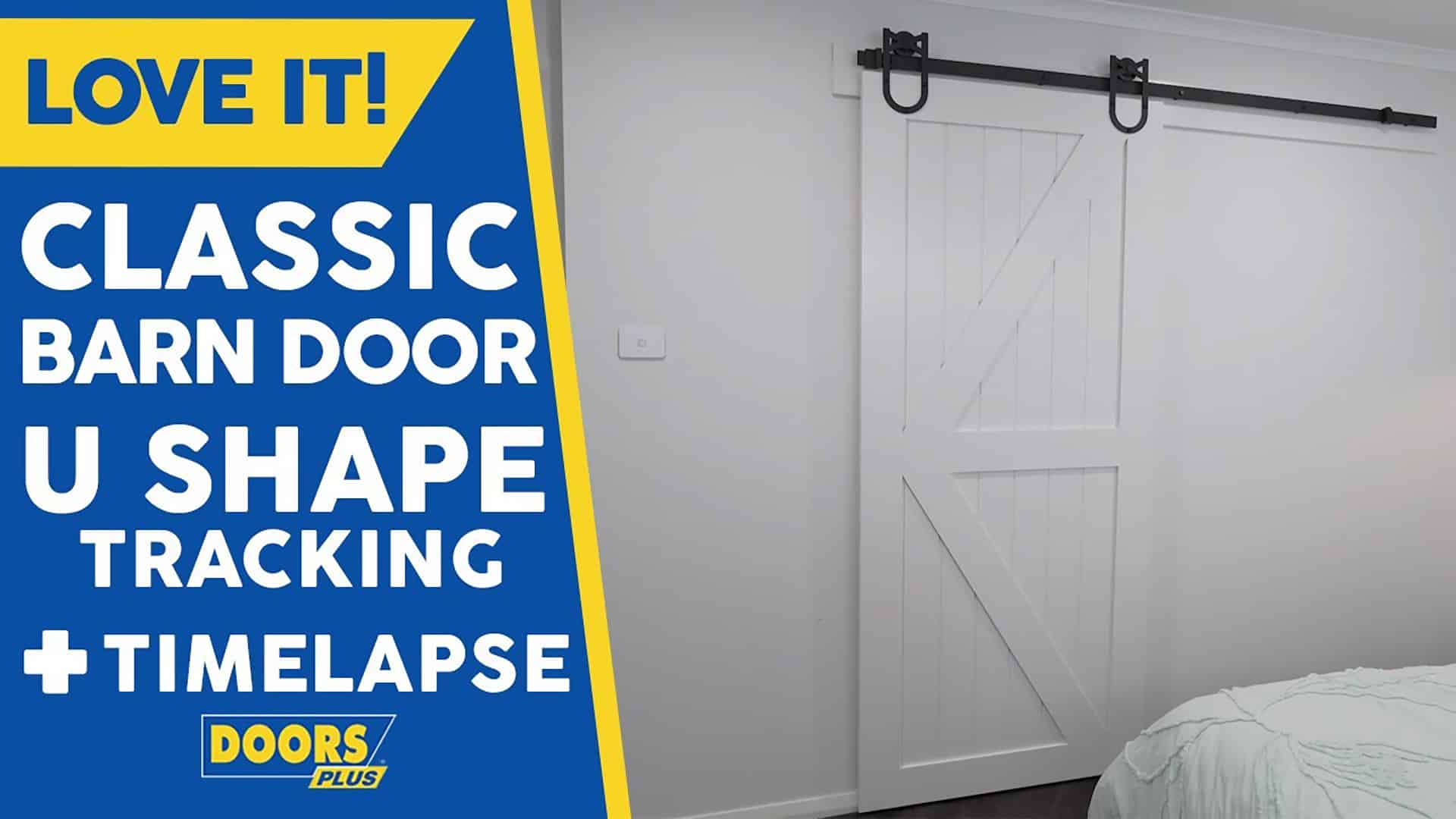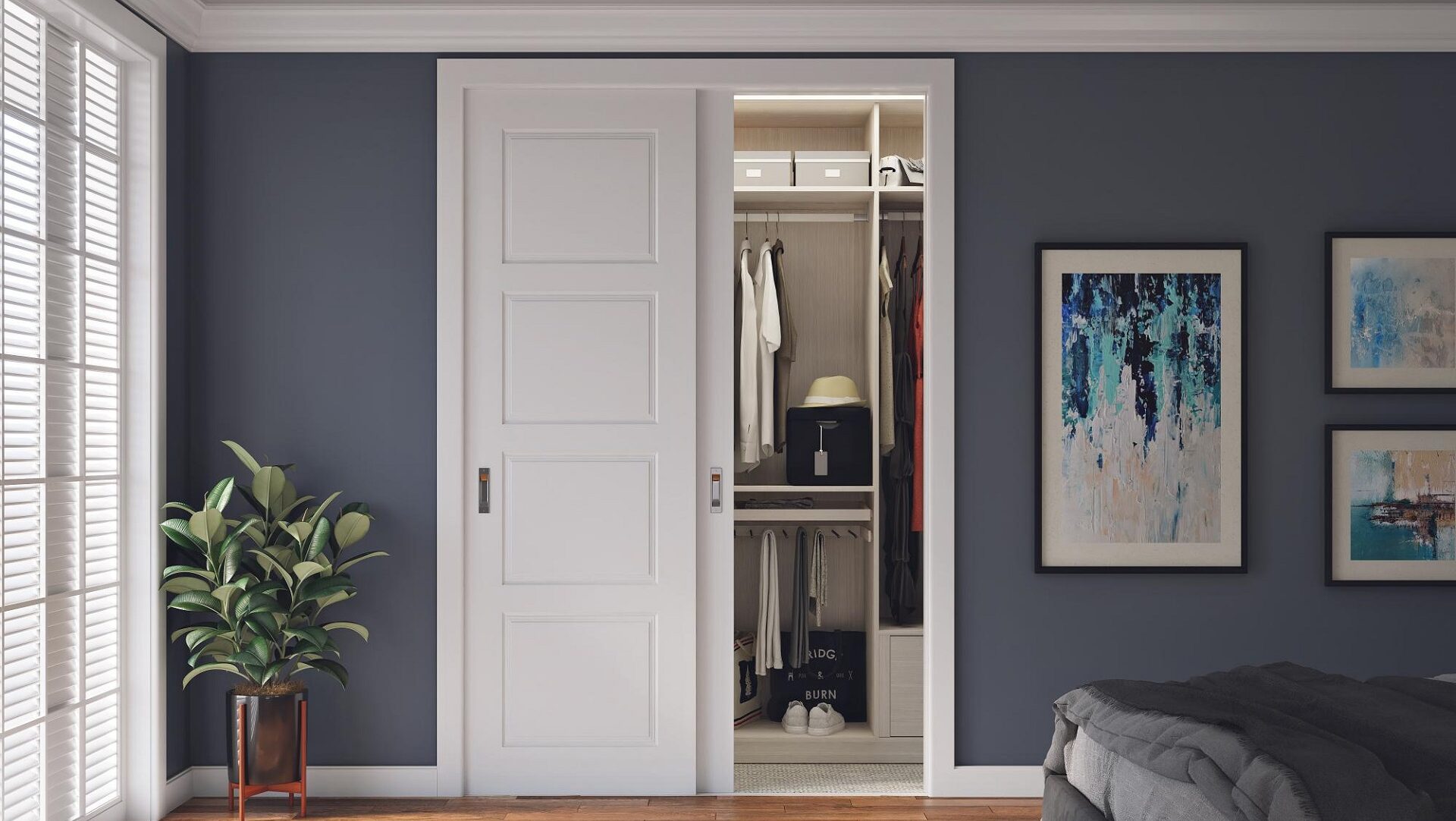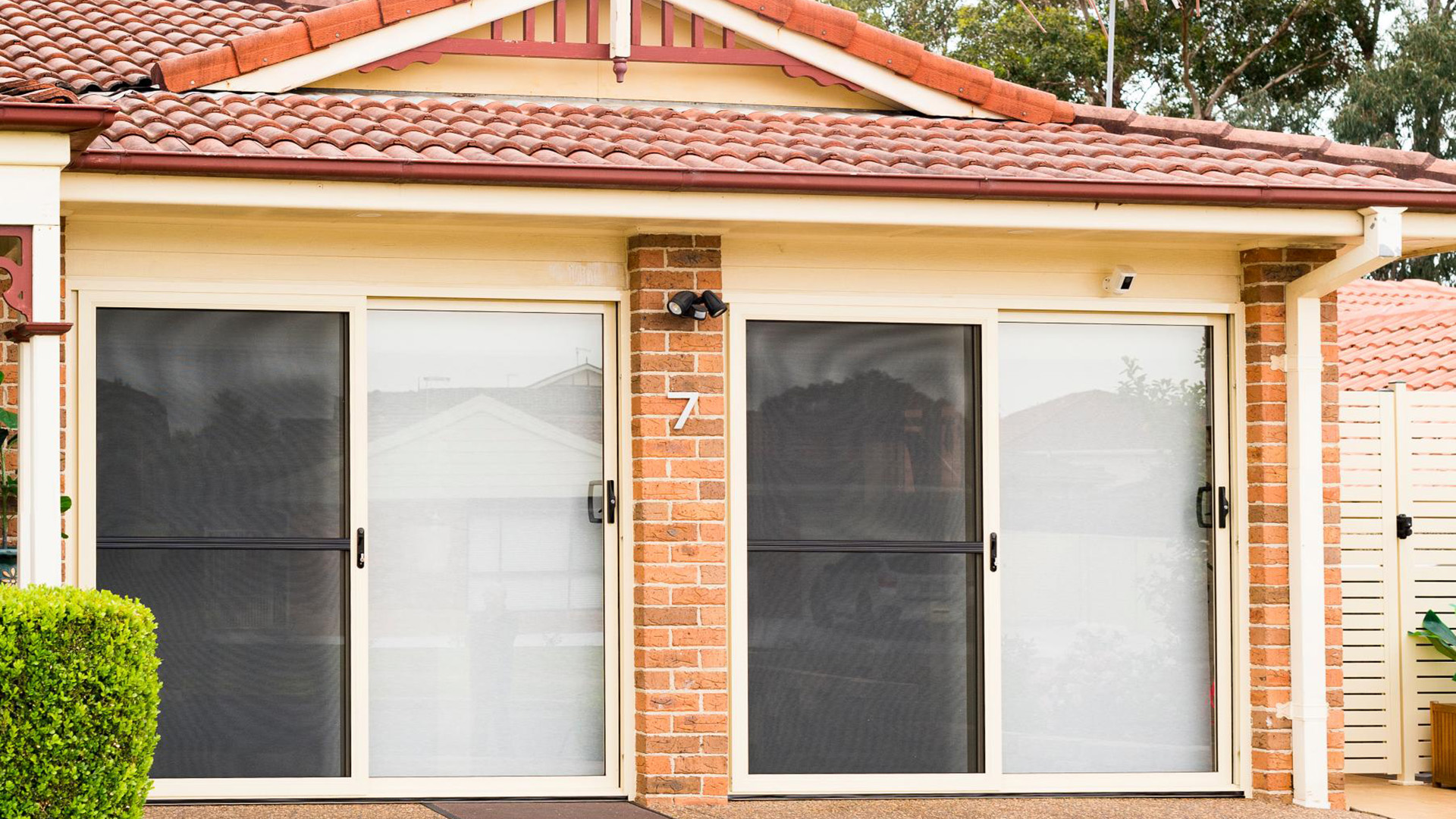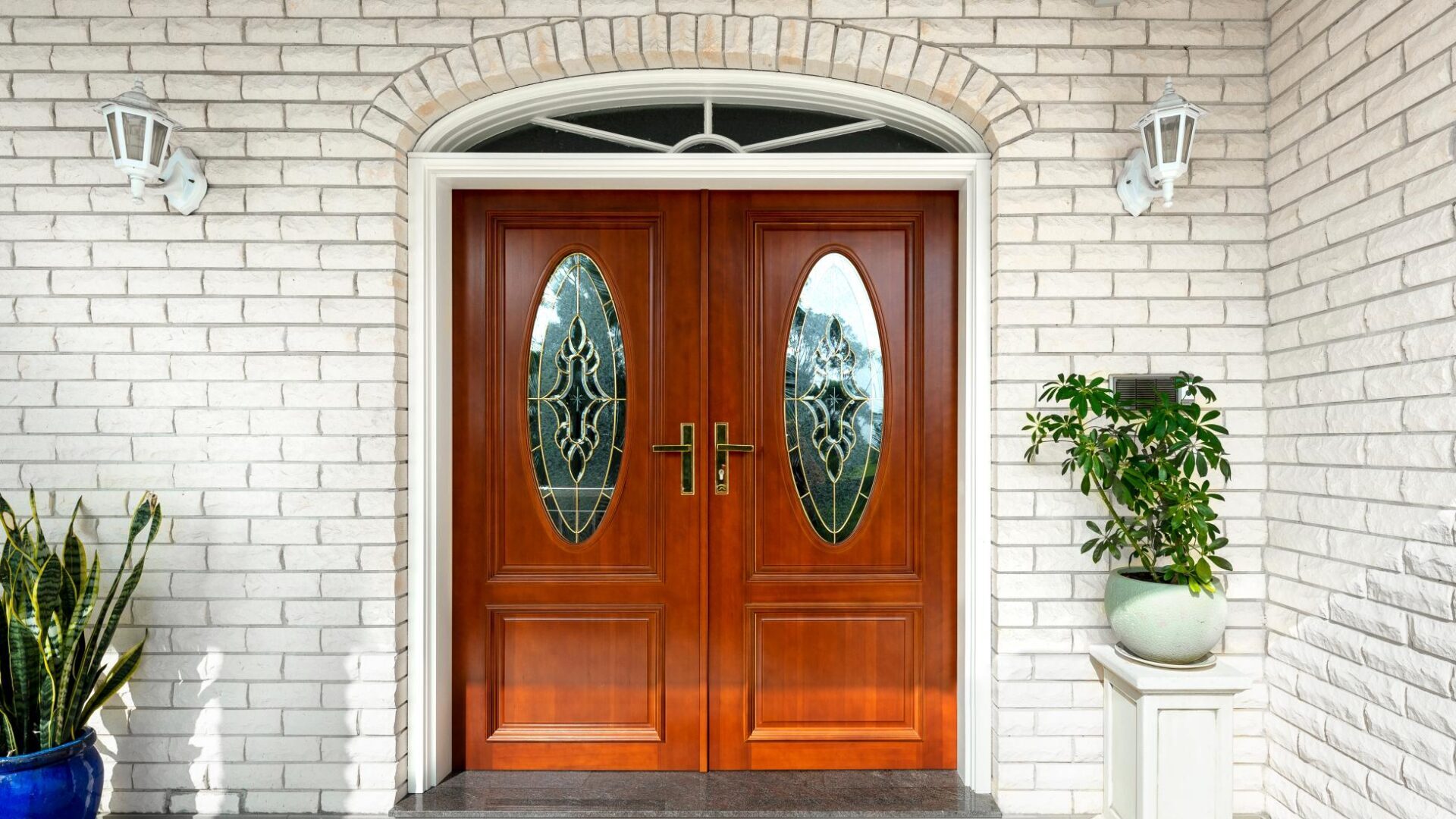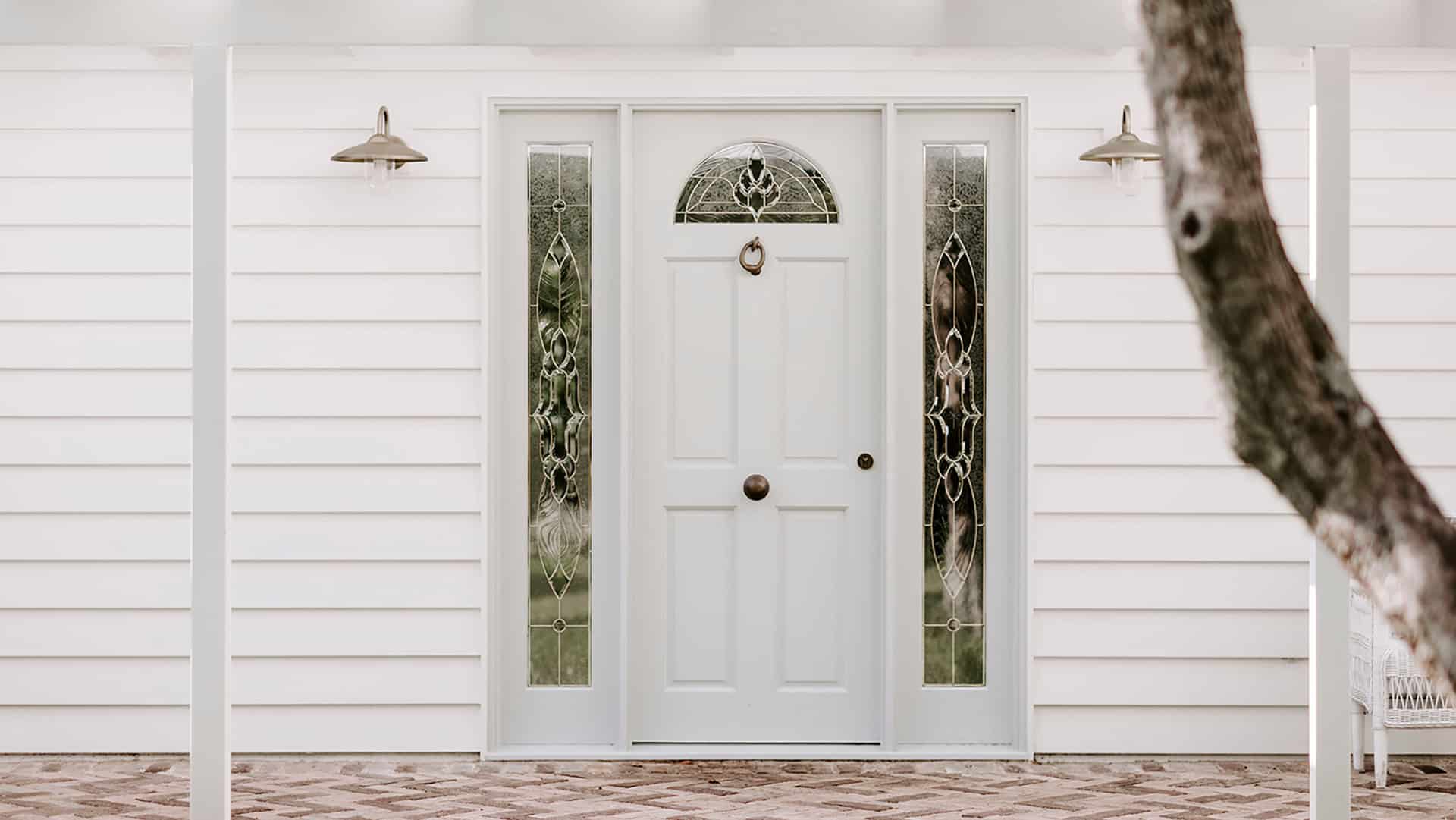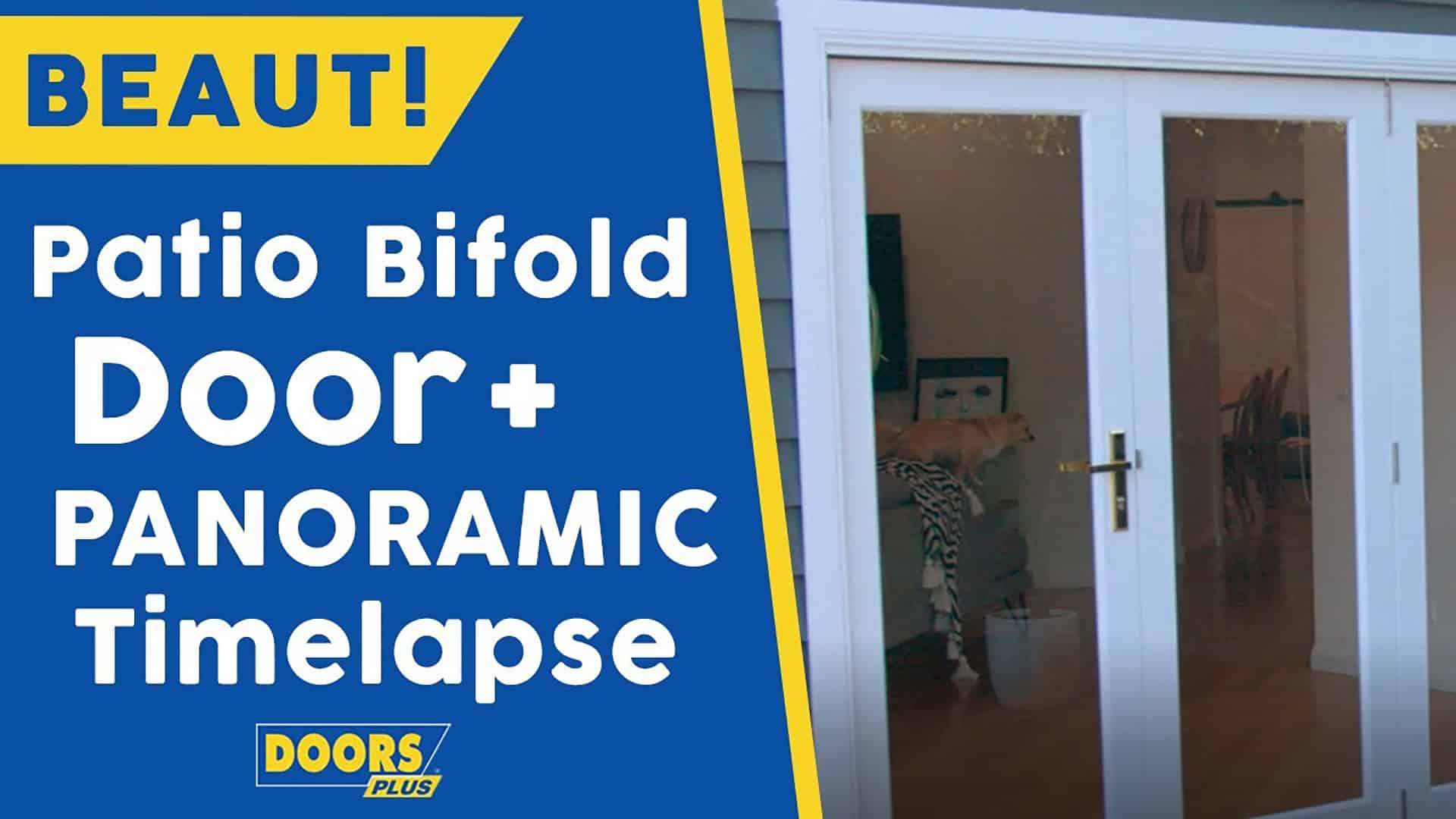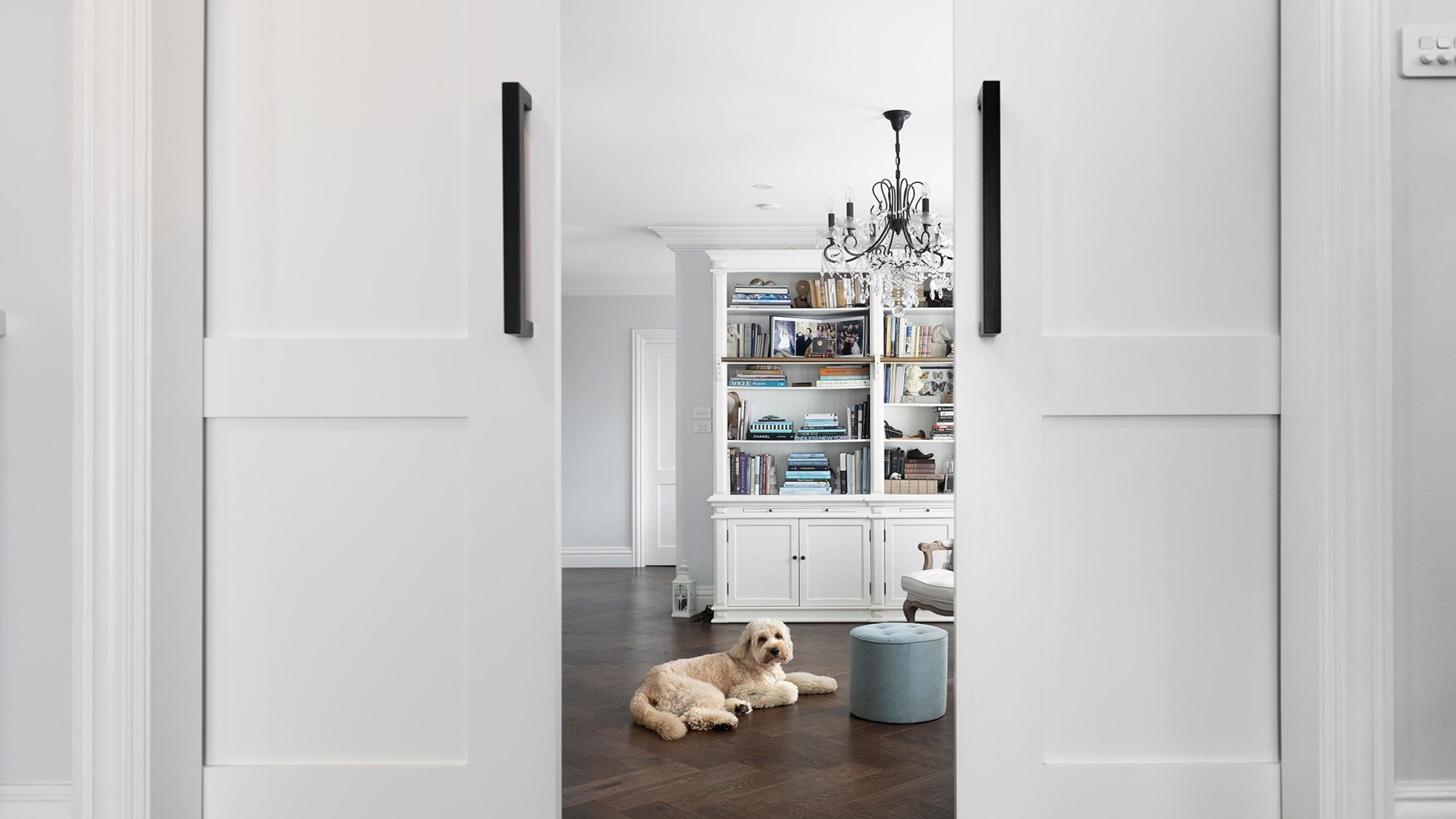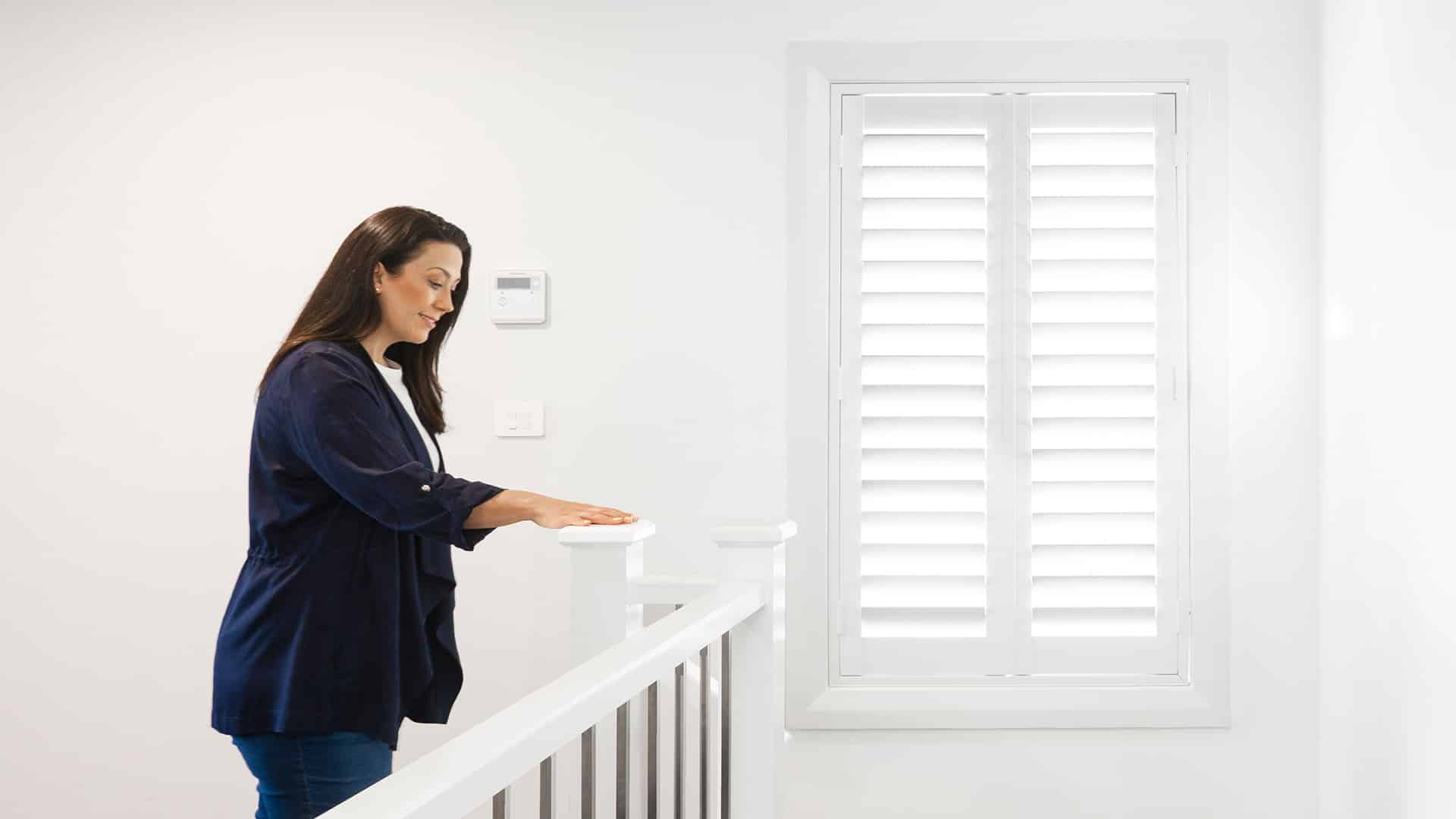How To Install Barn Doors
Once you’ve made your selection from the many different types of barn doors on the market, you will need to think about installation.
You may get a package deal that includes delivery and installation, you may choose to hire your own contractor to professionally fit your doors, or you may consider doing the job yourself.
In this guide, we will walk through the steps of how to install barn doors in a home, and will take a look at the pros and cons of hiring a professional to do it instead!
What Do I Need To Install Barn-Style Interior Doors
Before diving in, you will need to gather the necessary tools and equipment to ensure a smooth and efficient installation. Here’s what you will need if you plan to try your hand at how to install barn doors in house:
- Measuring tape
- Spirit level
- Drill and drill bits
- Screwdriver or screw gun
- Stud finder (to locate the wall studs for a secure mounting)
- Pencil
- Ladder or step stool
- Barn door hardware kit (track, hinges, screws, handles, bolts, and any other hardware components)
- Paint roller, brush and paint/stain for finishing your doors
Steps To Install Barn Doors
Measure and mark the wall:
Use the measuring tape and pencil to mark the height and position of the barn door on the wall.
Think about the clearance required for a smooth slide and ensure the doors will not interfere with existing furniture or fixtures.
Locate wall studs:
Use a stud finder to locate the wall studs along the marked area.
It’s crucial to mount the track securely into the studs to support the weight of the doors.
Install the track:
Measure and mark the centre of the track on the wall (check your door kit for instructions about height, positioning and clearance).
Attach the track to the wall using the provided bolts and a level to check that it’s straight.
Ensure that the track is securely fastened to the wall studs. (Some doors will require a backing board or mounting board for extra support.
In this case, mark the position of the wall studs and the track holes on the mounting board rather than the wall, and then attach the board to the wall. Pre-drill the holes and then attach with screws.)
Attach door hangers and rollers:
Install the hangers onto the top edge of the barn doors according to the manufacturer’s instructions.
Ensure that the hangers are level and evenly spaced.
You may also need to attach rollers to the bottom of the door using the template from the hardware kit that came with your door.
Mark and pre-drill the holes and then screw in the rollers.
Hang the doors:
Lift the doors and carefully place them onto the track, ensuring that the hangers glide smoothly.
Test the doors to ensure they open and close properly.
Install door stops and floor guide:
Attach door stops on both ends of the track to prevent the doors from sliding off.
Install a floor guide at the bottom to keep the doors aligned and stable.
Adjust and tighten:
Make any necessary adjustments to the doors and hardware to ensure they hang straight and operate smoothly.
Double-check the levelness and alignment before tightening all the screws.
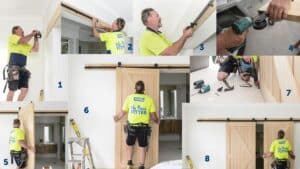
Should You Have Barn Doors Installed Professionally?
If you follow the above steps for how to install barn doors, as well as the guidance provided in your door hardware kit, it is possible to do the fit yourself.
If you’re wondering how much does it cost to install barn doors, a DIY job can be tempting, but there are several other factors that are worth considering too.
Let’s look at the pros and cons of having your doors professionally fitted.
-
Pros
- Expertise and experience: Professional installers have the knowledge and experience to get the job done to a high standard, so you are likely to get a better end result.
- Time-saving: Hiring professionals can save you time and effort, as they are familiar with the process and can usually complete the installation swiftly and efficiently.
- Warranty and guarantees: Many professional installers offer warranties and guarantees, providing peace of mind in case you have any issues with your doors.
-
Cons
- Cost: Hiring professionals can be more expensive than a DIY installation. Learn more about the cost of barn doors to help you budget for your project as a whole.
- Scheduling and availability: Researching and coordinating with professional installers can be time-consuming in itself, and they may not be immediately available for your job.
- Less custom: With a DIY installation, you have more control and creative freedom, from the exact positioning of the doors to hardware placement and finishing.
FAQs About Installing Barn Doors
-
Can I install a barn door myself?
It is possible to install a barn door yourself, if you are confident that you have the tools and the expertise to get the job done right.
Doing it yourself can save you money, but some homeowners would prefer the convenience and peace of mind of paying for a professional to do the installation quickly and efficiently, as well as providing the security of a warranty.
-
Do you need a board attached to the wall for a barn door?
Sometimes, a barn door will require a backer board.
If there is not much clearance between the door and the wall when the door is hanging on its track, you may need to install both the track and door onto a board.
A backer board also provides more support and helps to bear the weight of the door if your wall is not a supporting wall.
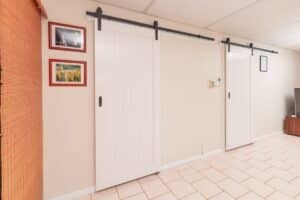
-
Is it difficult to install a barn door?
Some installations are more complex than others – for example, a set of extra wide, double sliding doors will likely be more challenging than a single, standard-sized swinging door.
If there is work to be done to prepare the door frame, this will also add to the complexity of the job.
If you are unsure, it’s best to ask a professional to assess the scope of the job and give you an estimate so that you can weigh up whether you want to tackle it yourself.
-
Do barn doors need a bottom guide?
Interior barn doors don’t always need a bottom guide.
Your doors can hang from a top track and slide along the wall to open.
However, a bottom guide can give added support and stability, especially if your doors are particularly big and heavy.
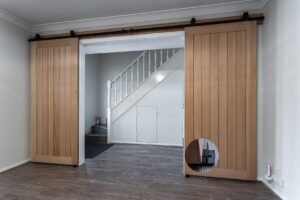
Do You Need Help Installing a Barn Door?
Now that you have an idea of how to install sliding barn doors in house, you can weigh up the pros and cons of DIY vs. professional installation.
If you have the tools, equipment and know-how, you should be able to follow these steps, as well as the specific guidance supplied with your door and hardware.
At Doors Plus, we understand that not everyone is a door specialist or an experienced carpenter, and that’s where we come in.
Many of our interior barn door packages include professional installation, so your doors will be measured, made and installed for you – no fuss.
We can also answer your questions about standard and custom barn doors sizes and even give you tips on how to insulate barn doors for maximum performance.
Visit your nearest Doors Plus showroom and embark on your journey of interior transformation today!

